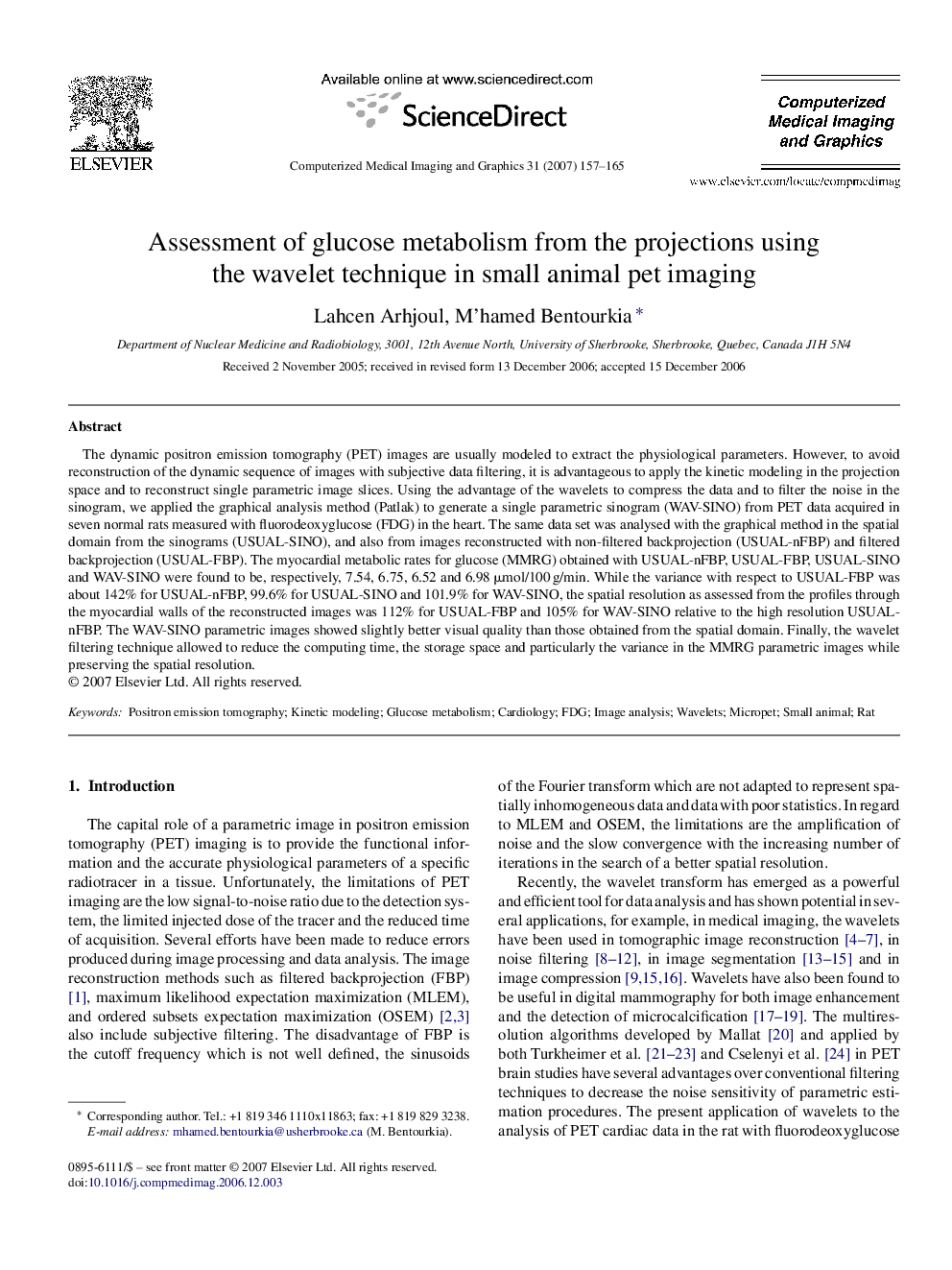| Article ID | Journal | Published Year | Pages | File Type |
|---|---|---|---|---|
| 504615 | Computerized Medical Imaging and Graphics | 2007 | 9 Pages |
The dynamic positron emission tomography (PET) images are usually modeled to extract the physiological parameters. However, to avoid reconstruction of the dynamic sequence of images with subjective data filtering, it is advantageous to apply the kinetic modeling in the projection space and to reconstruct single parametric image slices. Using the advantage of the wavelets to compress the data and to filter the noise in the sinogram, we applied the graphical analysis method (Patlak) to generate a single parametric sinogram (WAV-SINO) from PET data acquired in seven normal rats measured with fluorodeoxyglucose (FDG) in the heart. The same data set was analysed with the graphical method in the spatial domain from the sinograms (USUAL-SINO), and also from images reconstructed with non-filtered backprojection (USUAL-nFBP) and filtered backprojection (USUAL-FBP). The myocardial metabolic rates for glucose (MMRG) obtained with USUAL-nFBP, USUAL-FBP, USUAL-SINO and WAV-SINO were found to be, respectively, 7.54, 6.75, 6.52 and 6.98 μmol/100 g/min. While the variance with respect to USUAL-FBP was about 142% for USUAL-nFBP, 99.6% for USUAL-SINO and 101.9% for WAV-SINO, the spatial resolution as assessed from the profiles through the myocardial walls of the reconstructed images was 112% for USUAL-FBP and 105% for WAV-SINO relative to the high resolution USUAL-nFBP. The WAV-SINO parametric images showed slightly better visual quality than those obtained from the spatial domain. Finally, the wavelet filtering technique allowed to reduce the computing time, the storage space and particularly the variance in the MMRG parametric images while preserving the spatial resolution.
